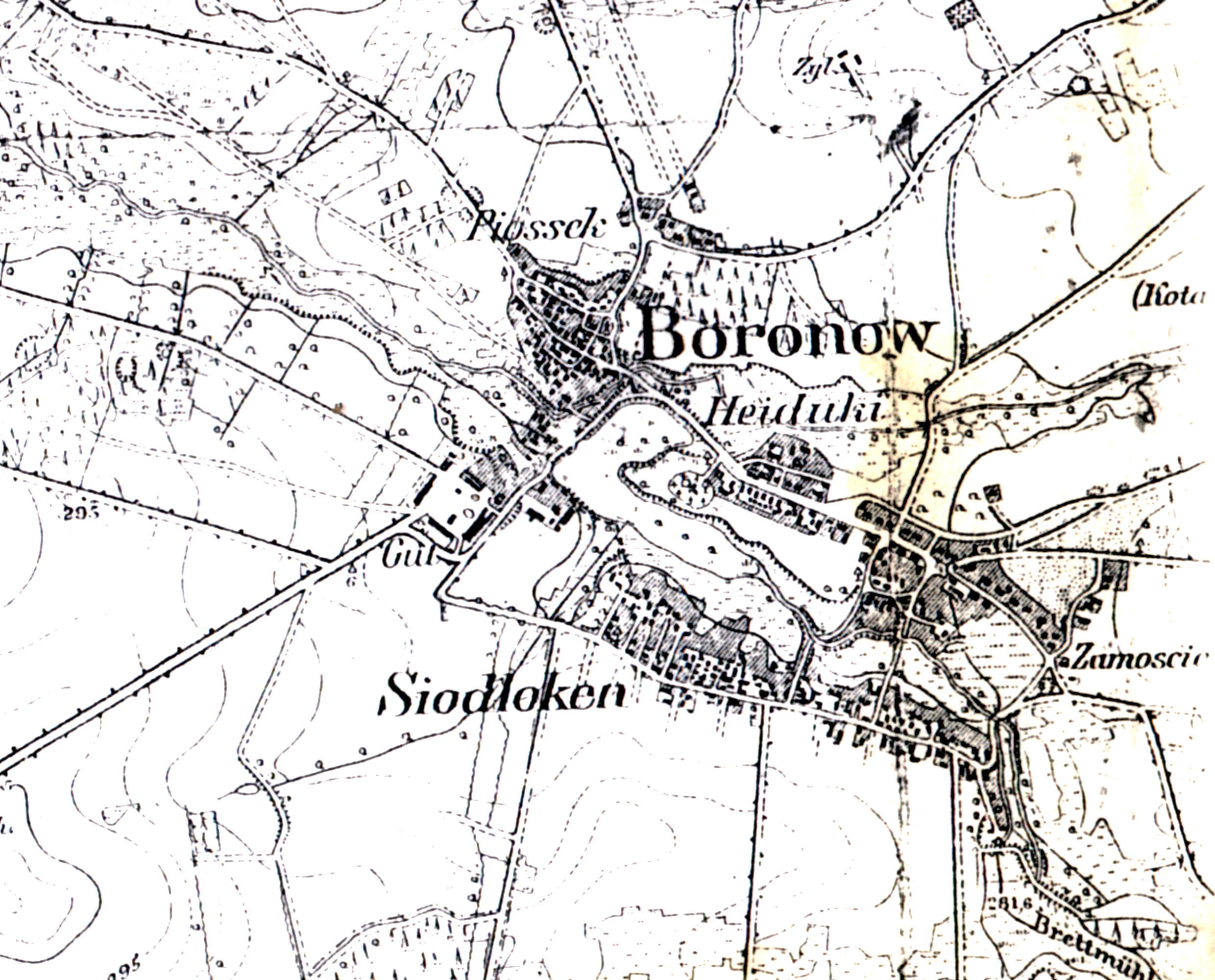Boronów on:
[Wikipedia]
[Google]
[Amazon]
Boronów (german: Boronow) is a
 The written history of Boronów begins in the 13th century in documents of Casimir III, but in that area older relics from
The written history of Boronów begins in the 13th century in documents of Casimir III, but in that area older relics from
village
A village is a clustered human settlement or community, larger than a hamlet but smaller than a town (although the word is often used to describe both hamlets and smaller towns), with a population typically ranging from a few hundred ...
in Lubliniec County
__NOTOC__
Lubliniec County ( pl, powiat lubliniecki) is a unit of territorial administration and local government (powiat
A ''powiat'' (pronounced ; Polish plural: ''powiaty'') is the second-level unit of local government and administration ...
, Silesian Voivodeship
Silesian Voivodeship, or Silesia Province ( pl, województwo śląskie ) is a voivodeship, or province, in southern Poland, centered on the historic region known as Upper Silesia ('), with Katowice serving as its capital.
Despite the Silesian V ...
, in southern Poland. It is (since 1993) the seat of the gmina (administrative district) called Gmina Boronów
__NOTOC__
Gmina Boronów is a rural gmina (administrative district) in Lubliniec County, Silesian Voivodeship, in southern Poland. It was formed in 1993, having previously been part of Gmina Herby. Its seat is the village of Boronów, which lies ...
. It lies approximately east of Lubliniec
Lubliniec (german: Lublinitz) is a town in southern Poland with 23,784 inhabitants (2019). It is the capital of Lubliniec County, part of Silesian Voivodeship (since 1999); previously it was in Częstochowa Voivodeship (1975–1998).
Geograp ...
and north of the regional capital Katowice. it is on the Liswarta
The Liswarta is a river in south-central Poland, a tributary of the Warta
The river Warta ( , ; german: Warthe ; la, Varta) rises in central Poland and meanders greatly north-west to flow into the Oder, against the German border. About long, ...
river. The village has a population of 2,793. Between 1975 and 1998 it was in the former Częstochowa Voivodeship
Częstochowa Voivodeship () was a unit of administrative division and local government in Poland in years 1975–1998, superseded mainly by Silesian Voivodeship, with a few eastern gminas attached to the freshly created Świętokrzyskie Voivodesh ...
.
The name Boronów originates from the coniferous forest
A forest is an area of land dominated by trees. Hundreds of definitions of forest are used throughout the world, incorporating factors such as tree density, tree height, land use, legal standing, and ecological function. The United Nations' ...
s ( pl ''bory'') in the area or from the surname ''Boronowski'', who was one of owners of this village. In old chronicles the names ''Borunow'' and ''Bornów'' are found. But on the herb of Boronów there is a harrow, because it was a sign on the old village's stamp.
History of Boronów
 The written history of Boronów begins in the 13th century in documents of Casimir III, but in that area older relics from
The written history of Boronów begins in the 13th century in documents of Casimir III, but in that area older relics from Neolithic
The Neolithic period, or New Stone Age, is an Old World archaeological period and the final division of the Stone Age. It saw the Neolithic Revolution, a wide-ranging set of developments that appear to have arisen independently in several p ...
and Lusatian culture
The Lusatian culture existed in the later Bronze Age and early Iron Age (1700 BC – 500 BC) in most of what is now Poland and parts of the Czech Republic, Slovakia, eastern Germany and western Ukraine. It covers the Periods Montelius III (earl ...
were found by archeologist
Archaeology or archeology is the scientific study of human activity through the recovery and analysis of material culture. The archaeological record consists of artifacts, architecture, biofacts or ecofacts, sites, and cultural landscap ...
in the 1920s.
In 1611 a wooden church
Church may refer to:
Religion
* Church (building), a building for Christian religious activities
* Church (congregation), a local congregation of a Christian denomination
* Church service, a formalized period of Christian communal worship
* C ...
was founded by Andrzej Dzierżanowski, owner of Boronów.
In the 19th century the village belonged to Hohenlohe-Ingelfingen's family. In this time it was an industrial village. On its area there were two mines of ore, two breweries and a sawmill
A sawmill (saw mill, saw-mill) or lumber mill is a facility where logs are cut into lumber. Modern sawmills use a motorized saw to cut logs lengthwise to make long pieces, and crosswise to length depending on standard or custom sizes (dimensi ...
. Both mines were the largest in the whole ziemia lubliniecka.
Twin towns
* Międzyzdroje,Poland
Poland, officially the Republic of Poland, is a country in Central Europe. It is divided into 16 administrative provinces called voivodeships, covering an area of . Poland has a population of over 38 million and is the fifth-most populou ...
References
Villages in Lubliniec County {{Lubliniec-geo-stub